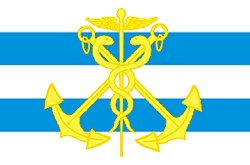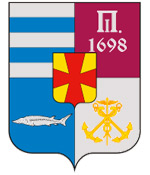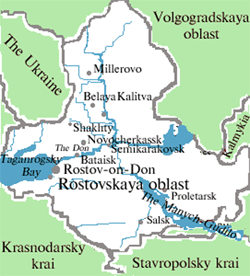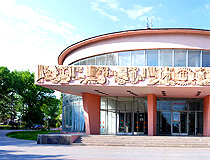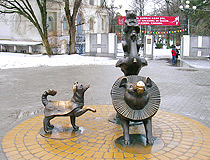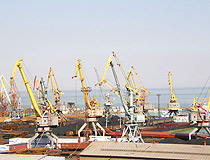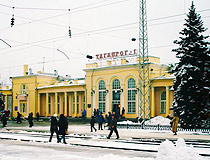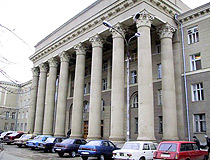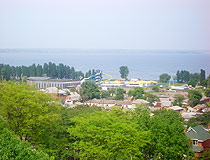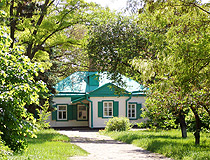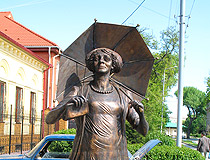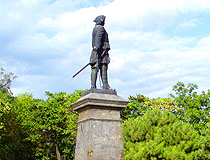Taganrog - Overview
Taganrog is a city in Russia, the second largest city of the Rostov region. It is located on the northern shore of the Taganrog Bay (the Azov Sea), about 50 km from the mouth of the Don River and the border with Ukraine, 1,144 km south of Moscow, 77 km west of Rostov-on-Don (the capital of the region).
The population of Taganrog is about 245,600 (2022), the area - 95 sq. km.
The phone code - +7 8634, the postal codes - 347900-347942.
History of Taganrog
In the 7th-6th centuries B.C., according to archaeological research, there was a Greek settlement on the territory of present Taganrog. Today, there are no remains of this settlement. It was founded in the second half of the 7th century B.C. and destroyed in the second half of the 6th century B.C., probably by nomadic Scythians.
Taganrog was first mentioned in written sources in 1698. It was founded after the capture of Azov by Peter’s I order as a fortress and harbor for the Russian Navy. Taganrog became the first Russian naval base and seaport on the open coast. It was also the first Russian town built on a regular plan.
The fortress was originally called Troyetsk, then Troitsk and finally Taganrog. Peter I even intended to transfer the capital of the country to Taganrog. But Russia lost the war against Turkey and it determined the fate of the town.
More Historical Facts…
Under the terms of the peace treaty, Russia was to destroy the harbor and the town itself. By February 1712, these works were completed. In 1769, during another Russian-Turkish war, the restoration of Taganrog began by Catherine’s the Great order.
Taganrog lost its military importance after the founding of Sevastopol in 1783. The town turned into the largest trade port in the Russian Empire.
In 1820, A.S.Pushkin stayed in Taganrog during his trip to the Caucasus. He spent the night in the house of P.A.Papkov, the mayor of the town. In 1825, the Emperor Alexander I died in this house (corner of Grecheskaya Street, 40 and Dvortsovy (Nekrasovsky) Avenue). Later, the memorial museum of the Emperor Alexander I was opened in the house.
In May 1855, during the Crimean War of 1853-1856, the English-French squadron entered the Sea of Azov, trying to deprive the Russian army in the Crimea its rear bases. The squadron bombarded Taganrog and tried to make a landing. The gunboat “Jasper” was destroyed by Cossacks during the landing operation near Taganrog. In August, the squadron stopped unsuccessful attempts and left the Sea of Azov.
Fertile agricultural regions located close to the town contributed to its development. Taganrog became an important center for the wheat and flax trade. In 1869, the railroad connected the town with Kharkov and Rostov-on-Don.
In the 19th century, Taganrog continued to be a major center of trade. Today, there are several houses of Italian and Greek merchants that retained since that time. At the end of the 19th century, the local industry began to develop quickly; metallurgical, boiler and machine-building plants were constructed. In 1908, the first power station was built.
In 1918-1920, during the Russian Civil War, the General Headquarters of Denikin (the Commander-in-Chief of the Russian South) was located in Taganrog. Since 1937, the city is part of the Rostov region. Taganrog was occupied by the Germans for almost two years during World War II. After the war, the local economy recovered rapidly.
Taganrog views
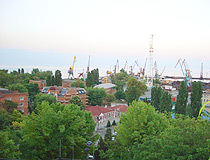
Taganrog - the view from above
Author: Egor Selyanko
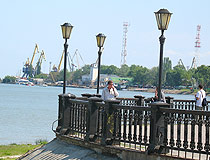
On the seafront in Taganrog
Author: Ann Genergart
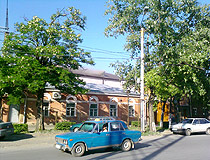
Taganrog street view
Author: Andrey Kholyavkin
Taganrog - Features
Taganrog is a seaside city located in the south-west of the Rostov region. The climate is relatively dry, temperate continental. The average temperature in December - minus 2.6 degrees Celsius, in July - plus 24.6 degrees Celsius.
The city got its name from Taganiy Rog Cape on which it is located. It is a large industrial, scientific, cultural, and historical center, one of the largest seaports in the south of Russia.
The largest enterprise of the city is Taganrog metallurgical plant: steel production, steel pipes for the oil and gas industry. Mechanical engineering is well developed in the city: boiler equipment for power stations, forge and press equipment, harvesters. Also there are military, chemical, light and food industry plants.
Public transport is presented by trams, trolleybuses, buses, and minibuses. Railway connects Taganrog with Rostov-on-Don, the cities and towns of the Donetsk region (Ukraine). The highway Rostov-on-Don - Mariupol (Ukraine) passes through the city.
Taganrog gave Russia and the world a lot of outstanding people: A.P.Chekhov (his 150th anniversary was celebrated in 2010), F.G.Ranevskaya, K.A.Savitsky, A.K.Kuindzhi, K.G.Paustovsky, I.D.Vasilenko, A.A.Durov, Ye.V.Obraztsova, M.I.Tanich.
Attractions of Taganrog
Passenger ships and yachts carry out walks in the Azov and Black Seas, the Don River. The following river cruises are available: Moscow-Taganrog-Moscow, Samara-Taganrog-Samara, Moscow-Taganrog-Yeisk-Moscow. The city has a yacht club, boat stations, piers.
Taganrog stone stairs (Depaldo Stone Steps), connecting Grecheskaya street with Pushkinskaya Embankment, is one of the main attractions of the city (the length - 108 m, the width - 6.5 m). Park of Culture and Rest named after Gorky (Petrovskaya Street, 104) is the main resting place after the sea, a park for a family holiday.
Museums
- Taganrog Local History Museum (Frunze Street, 41),
- Taganrog Museum of Art (Aleksandrovskaya Street, 54),
- Museum of Urbanism (Frunze Street, 80),
- Literary Museum of Anton Chekhov (Oktyabrskaya Street, 9),
- Museum “House of Anton Chekhov” (Chekhova Street, 69),
- Museum “Chekhov’s Shop” (Aleksandrovskaya Street, 100),
- Taganrog Military Museum (Lesnaya Birzha Street, 20b),
- House-Museum of I.D.Vasilenko (Chekhova Street, 88),
- House-Museum of A.A.Durov (Glushko Lane, 44),
- Gallery “Piter” (Chekhova Street, 2),
- House of Tchaikovsky (Grecheskaya Street, 56),
- Taganrog Museum of Aviation Technology (Tsiolkovsky Street, 42).
Theaters and other cultural institutions
- Drama Theater named after Chekhov (Petrovskaya Street, 90),
- Youth Theater named after N. Malygina (Petrovskaya Street, 89),
- Theater “SaD” (Petrovskaya Street, 104),
- Taganrog Circus (Chekhova Street, 100).


